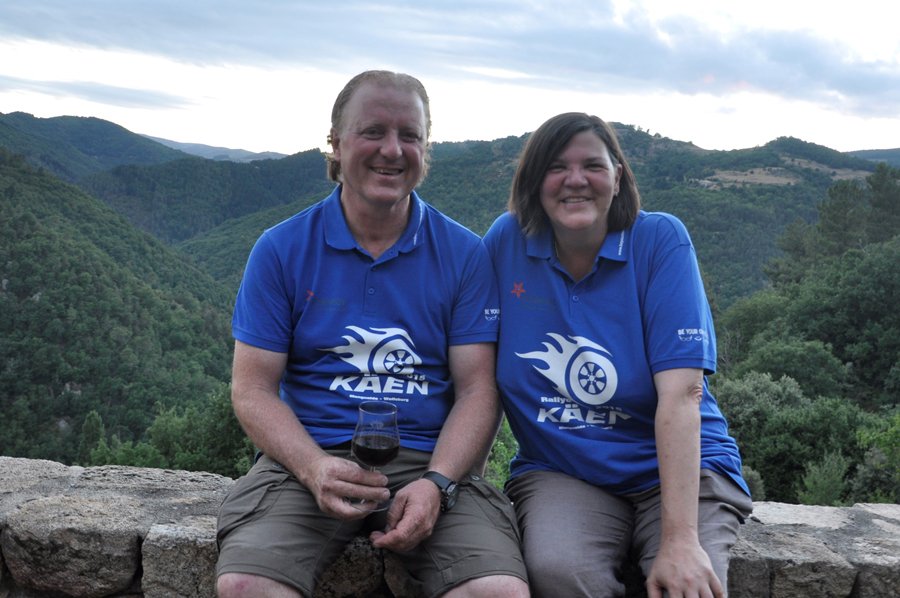Oona Scheepers, Automotive Designer, Volkswagen
Oona Scheepers recounts an unlikely trip in a classic VW that, like most good stories, starts with a bet over a drink.
“My partner, Stef, and I took the side of the original Beetle. The French, naturally, chose the Citroen 2CV. But how would we prove it?”
South African born automotive designer, Oona Scheepers has certainly left her stylish mark in the automotive world. She was responsible for the interior treatment of iconic models such as the Porsche Carrera GT, Cayenne and Cayman, as well as the Audi R8 and more than a few Audi concept cars.
She lives and breathes the VW brand and tells us about the time she took on a challenge of driving across multiple countries in two of Europe’s most recognised post-war cars.
“We were sitting enjoying a glass of wine with a few French friends, all of us from the automotive industry,” recalls Oona. “Initially, we were chatting about the various wines we were sampling but the discussion soon turned to cars. More specifically, which is the more desirable (and reliable) classic car from each country. My partner, Stef, and I took the side of the original Beetle. The French, naturally, chose the Citroen 2CV. But how would we prove it?”
The Scheepers and their counter team laid out the plan. The challenge would be to drive from Mangualde, Portugal, where the last of the Citroen 2CVs was built, crossing over Spain, Andorra and France to Wolfsburg Germany, where the last of the German Beetles was produced.
The approximately 3,000 km trip would take the form of a regularity rally, run over five days. Teams would not be allowed to use portable GPS units or motorways. It was only a road book and classic maps. Stef admits: “As you can imagine, we got lost quite a bit without any electronic help.”
Oona continues: “Our car was a 1956 Oval Window Beetle that was borrowed from the VW Museum. This Bug was already prepared in a way as VW built it to tackle the Mille Miglia. It had racecar-like seats and a powerful Porsche 356 S motor, but the brakes were standard, which is not great when it is capable of doing nearly 180 km/h top speed. (The French team of) Jean-Guy Passebois and Eric Daughtrey were in a 1970 Citroen 2CV.”
“Also, we figured that since we were going to be doing the rally anyway, we may as well raise some funds for charity. We chose the “Clouds of Hope” charity that runs an orphanage in our home country of South Africa as recipient of any funds collected.”
The original 2CV factory has been repurposed so it was not able to serve as the starting point for the trip. However, the French contingent arranged plenty of fanfare at Mangualde.
“We started in the town square and many of the locals came out. The mayor even made a speech, which had to be translated from Portuguese to German. There were loads of 2CVs and a single Beetle I remember. Just after setting off we drove past the gates of the old factory,” remembers Oona.
From Portugal the private rally made its way into southern Spain. Stef recounts: “When we crossed into Spain it felt as though we drove straight into Mexico. The roads were gravel, there were dogs sleeping in the shade of trees, sometimes in the middle of the road. I thought I had driven straight into an old Western movie.”
The little convoy, with back-up teams, zipped over the Pyrenees through Andorra and into France. “It was impressive how the two old cars tackled the mountain passes.”
“We stayed in some really beautiful places as we drove across France,” says Oona. “Jean-Guy had contacted many local classic car clubs and they’d come to meet us along the way, which was fantastic. Most memorable was the overnight stay in Carcassonne castle, the trip through the Ardeche gorge and eating home-made salted caramel ice cream in St.Sauveur after driving a special stage of the historic Rallye Monte Carlo.”
The penultimate leg of the journey brought the classic cars into Germany. They were scheduled to join an old-timer meet at Schloss Dyck, but the generator (alternator in modern speak) on the Beetle started to play up.
“This was the first real problem our car had suffered from the start while our friends in the De Chevaux had to make repairs daily. If we could not fix the generator we would lose the challenge. Fortunately Stef knew the head of the VW Autostadt Museum who was there displaying the one millionth Beetle, built in 1955,” she explains.
“I explained to the guys that we were ‘challenging’ this 2CV,” adds Stef. ”They did not hesitate to take the parts we needed from their valuable show car and fit it to ours. We eventually returned the parts to the VW Museum after the run was over.”
With the new parts fitted the Bug ran faultlessly from the overnight stop to the finish in Wolfsburg.
“The Wolfsburg VW Beetle Club came out to escort us to city hall. They must have come with about 50-60 cars. We almost held up the autobahn with all these cars, it was a lovely sight,” says Oona. “We ended up winning the challenge, as we knew we would. Even better, we raised just over €61,000 for the orphanage in Underberg, KwaZulu-Natal.”
“Our drive across Europe in those cars has been one of my favourite and most memorable road trips of all time. The Great Atlantic Drive is on my bucket list. Now that I am facing retirement I will make it a reality, sooner rather than later.”











Away from the cameras Helen Stanley is fan of the weird and wonderful and her Favourite Detour took her on a 400-mile round trip to an abandoned theme park.